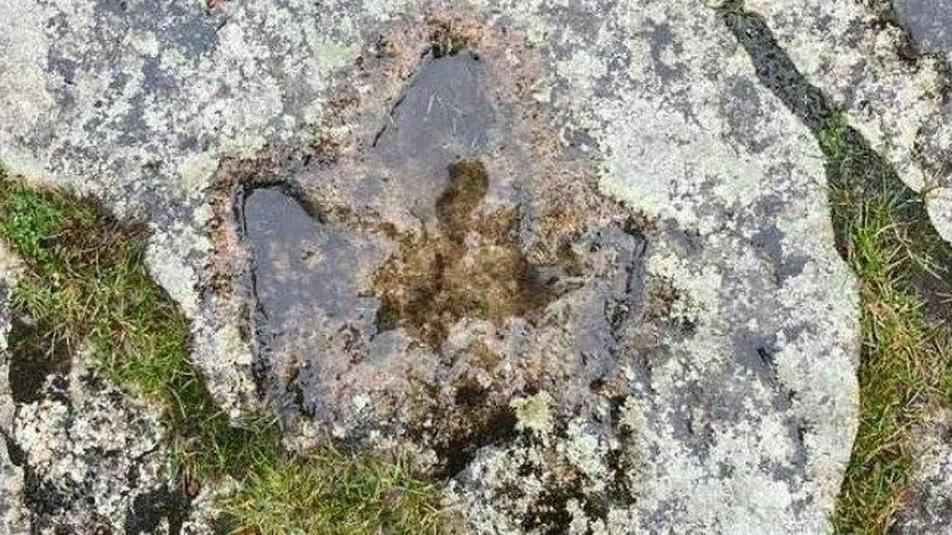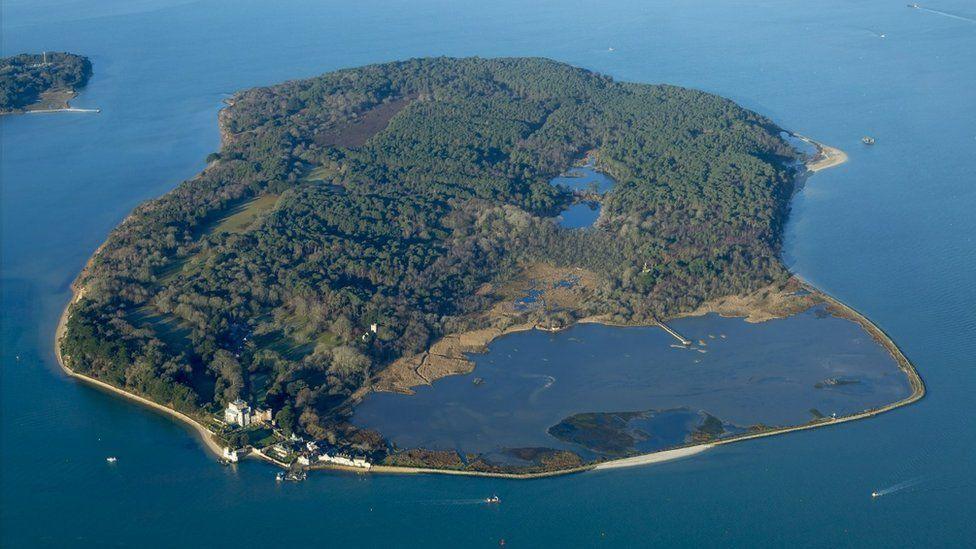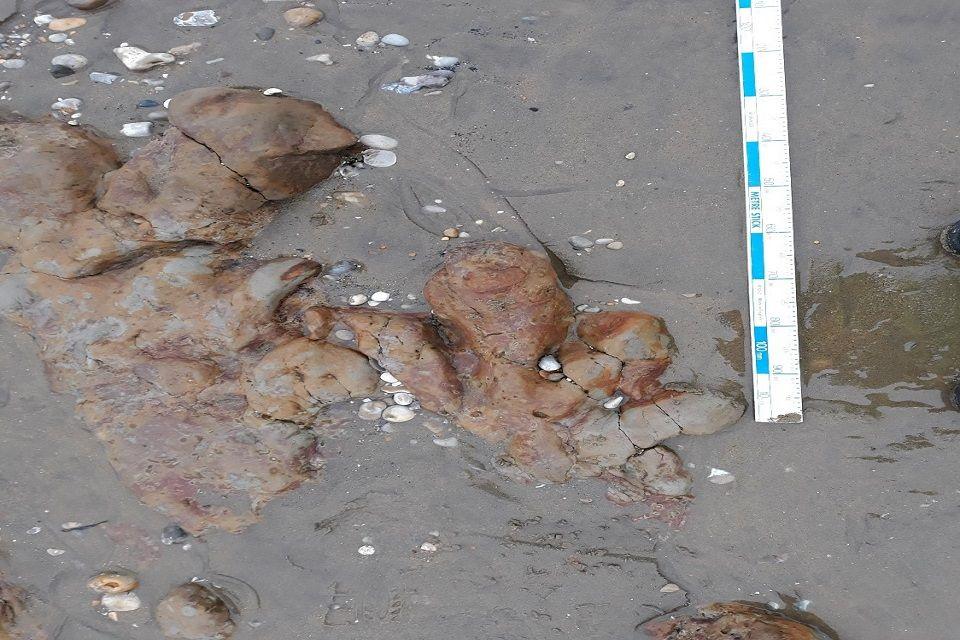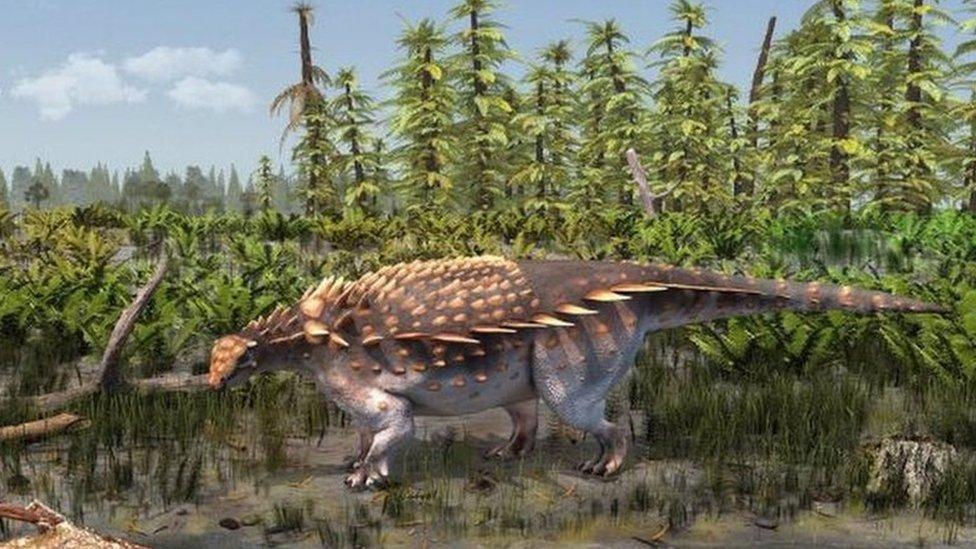Three-toed dinosaur footprint spotted at nature reserve

The three-toed rear footprint is believed to belong to a species of iguanodontian
At a glance
A dinosaur footprint has been found at Brownsea Island
The discovery was made by a National Trust Ranger near the castle at the nature reserve
It is thought to be about 140 million years old
The three-toed rear footprint is believed to belong to a species of iguanodontian
- Published
A footprint, thought to have been left behind by a dinosaur about 140 million years ago, has been spotted at a nature reserve.
The print, found by a National Trust ranger at Brownsea Island, in Poole Harbour, Dorset, is believed to belong to a three-toed Iguanodon.
Ranger Sophie Giles discovered it while out for a run in the grounds of Brownsea Castle.
National Trust said it was seeking further research on the identity of the rear footprint found in the rock.

The footprint was found in the grounds of the castle on Brownsea Island
Posting about the "exciting find" on social media, the National Trust said: "We believe that the rock may have come from the Isle of Purbeck, where you can already see many dinosaur footprints at Langton Matravers."
Dr Martin Munt, curator of the Dinosaur Isle Museum in Sandown, Isle of Wight, said the print of the hind foot was "comparable to those found on Purbeck, where the stone would have originated".
He added: "It is certainly what we call a tridactyl footprint, of the date we are talking about it could have been made by an iguanodontian or related dinosaur."
Brownsea Island, which forms part of the Purbeck National Nature Reserve, is closed for the winter to day visitors until 16 March.
A set of well-preserved dinosaur footprints were recently uncovered on a beach at Yaverland, Isle of Wight.
The prints were found at the seaside resort by engineers looking at sea defence plans for the seafront.
Follow BBC South on Facebook, external, X, external, or Instagram, external. Send your story ideas to south.newsonline@bbc.co.uk, external.
Related topics
- Published24 October 2023

- Published16 June 2023
